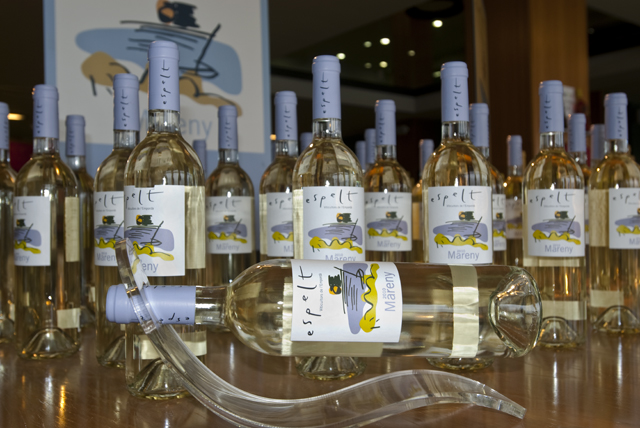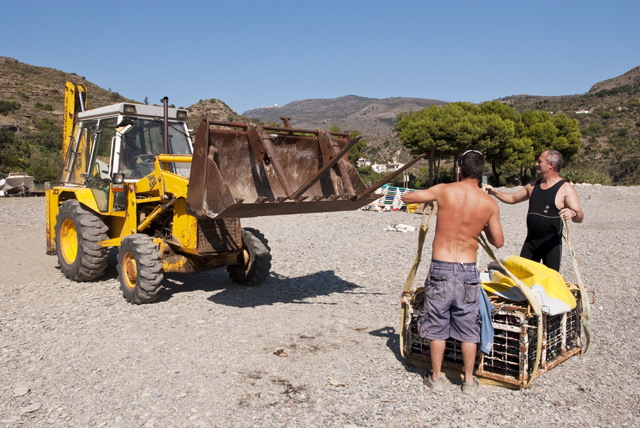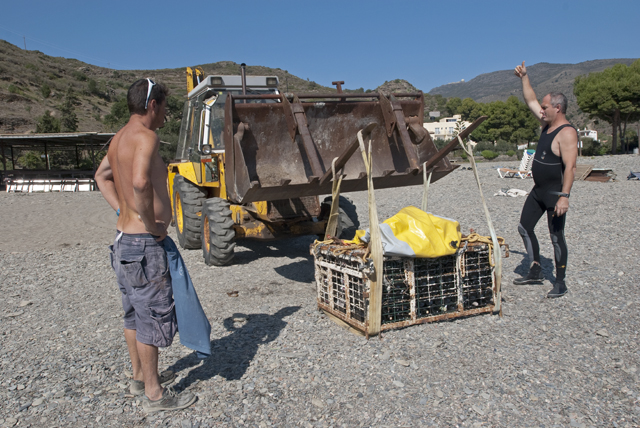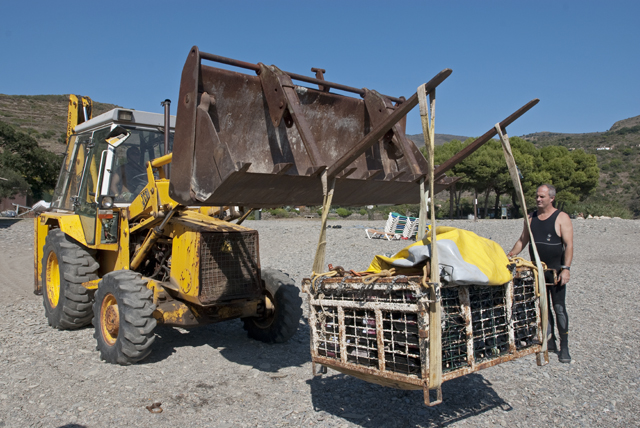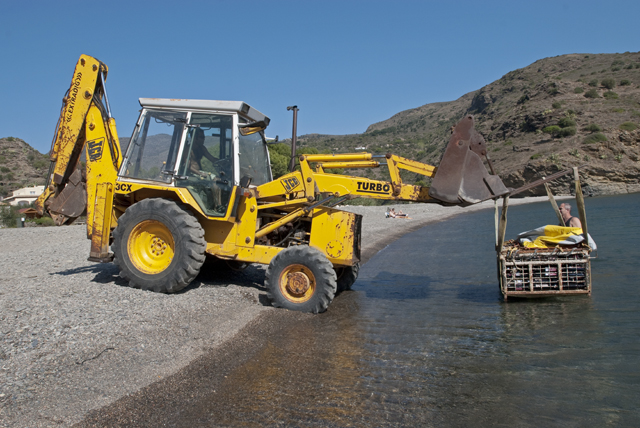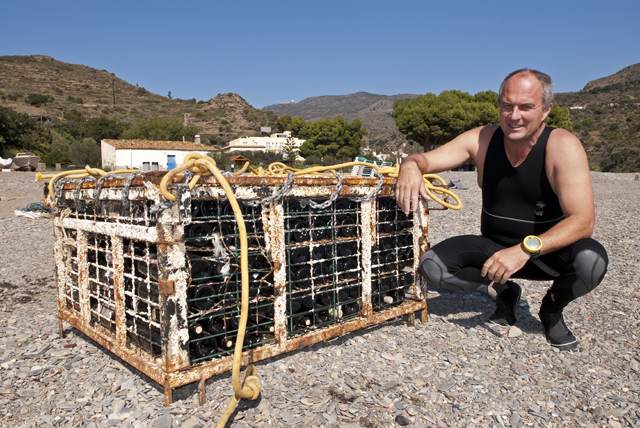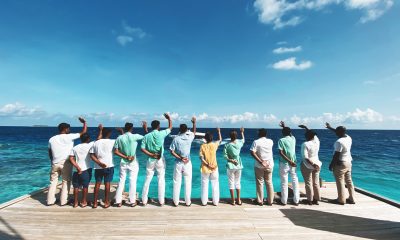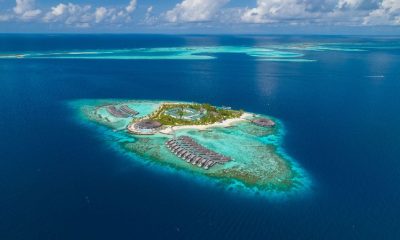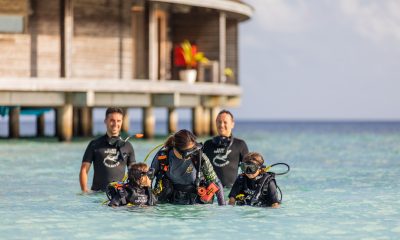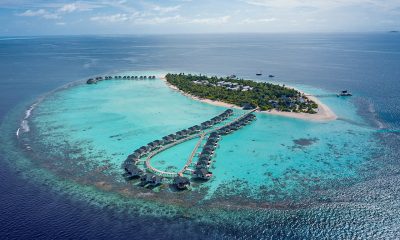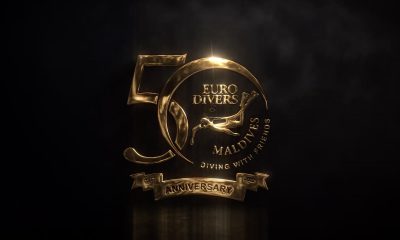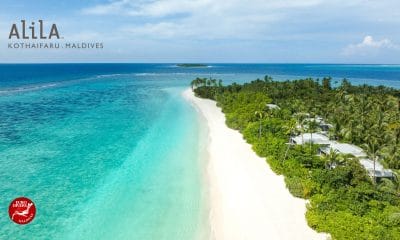News
Wining and Diving in Cala Joncols, Spain
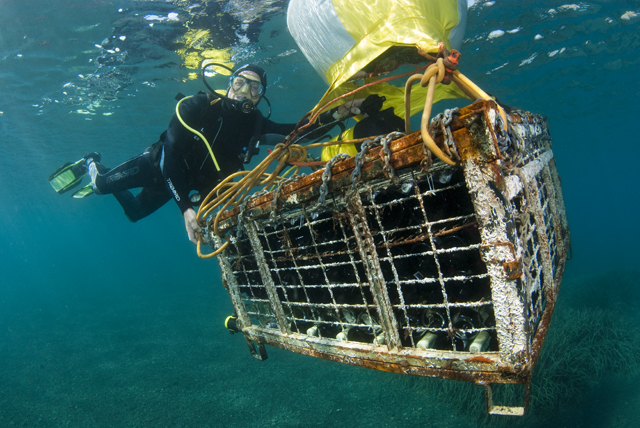
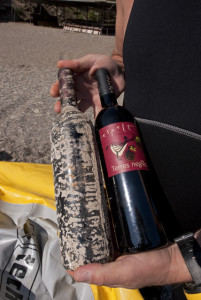 For me, the perfect ending to a full on day’s diving is being surrounded by friends, plenty of wine, eating, chatting and just chilling. During a recent diving holiday to Cala Joncols in Spain I found myself in this very situation with Euro-Divers manager Jan Boelen and his wife Martine. As we polished off the dregs of a surprisingly palatable Grenache Blanc Jan suggested that I should top up with a bottle of the house speciality wine that had been ‘brewed’ of all places underwater. At first I thought Jan was pulling my leg but out popped a bottle complete with barnacles and marine growth. In all my years of travelling I had never heard of such an unusual wine and wanted to find out more. By sheer fluke, my weeks holiday coincided with the ‘sinking’ of a new consignment of 300 bottles, so this gave me an ideal opportunity to photograph the whole production cycle from the initial submersion phase right through to the all important uncorking session at the Espelt vineyard near Gerona.
For me, the perfect ending to a full on day’s diving is being surrounded by friends, plenty of wine, eating, chatting and just chilling. During a recent diving holiday to Cala Joncols in Spain I found myself in this very situation with Euro-Divers manager Jan Boelen and his wife Martine. As we polished off the dregs of a surprisingly palatable Grenache Blanc Jan suggested that I should top up with a bottle of the house speciality wine that had been ‘brewed’ of all places underwater. At first I thought Jan was pulling my leg but out popped a bottle complete with barnacles and marine growth. In all my years of travelling I had never heard of such an unusual wine and wanted to find out more. By sheer fluke, my weeks holiday coincided with the ‘sinking’ of a new consignment of 300 bottles, so this gave me an ideal opportunity to photograph the whole production cycle from the initial submersion phase right through to the all important uncorking session at the Espelt vineyard near Gerona.
Jan had made arrangements for me to meet the main inspiration behind the whole project, MD of Espelt vineyard, Xavier Cepero i Yeste. Xavier said “We are people from the sea. We all know fishermen, the sea is all around us and we all dive. We can see the bay from the vineyard so I thought why not put the wine underwater.” Espelt have been operating for the past 12 years and are a family owned business. They have more than 20 hectares of vineyards and produce 4 reds, 4 whites, 4 desert wines and 3 sparkling varieties. Espelt is one of the most dynamic new companies in Spain with an annual growth rate of around 20% each year. Most of the wine is exported.
At the beginning of 2009 Xavier together with the owner of Cala Joncols Hotel, Manuel Gomez Fernandez, became joint partners in an underwater wine venture. Manuel, originally from Barcelona, is a qualified CMAS diving instructor. He has worked at the hotel since 1968 and eventually became the owner in 2000. Cala Joncols bay is way off the beat and track. The hotel is surrounded by olive groves, shrubs, flowers and overhanging plants. Most of the 35 rooms have a sea view, and the pebble beach is only a 30 to 40 metres walk away. There are no other shops, restaurants or bars within close proximity. A big percentage of Manuel’s clientele are scuba divers and outdoor enthusiasts coming from all over Europe, including the UK. Due to the hotel’s peaceful location I would recommend opting for the all-inclusive package.
Euro-Divers are the resident dive centre at the hotel, so naturally Jan was brought in to oversee the underwater wine operations. I watched the JCB hoist the 350kg crate over to the beachfront where Jan strapped on a single 500 litre lifting bag in preparation for the next stage. Jan told me the crate had been packed with a mixed variety of wines from reds to cava’s.
The dive boat slowly manoeuvred the now floating crate out the drop zone somewhere in the middle of the bay. Jan frequently used the protected bay for training and shore dives. He said it was particularly good spot for night dives where divers could always find morays, scorpions, nudibranches, anemones and even seahorses along the steep sided cliffs. In all Cala Joncols offers 18 dives sites inside the Cap de Creus natural park. Boat journeys are no more than 20 minutes each way.
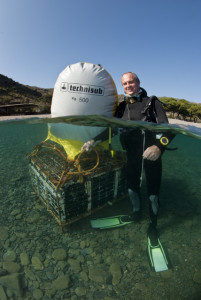
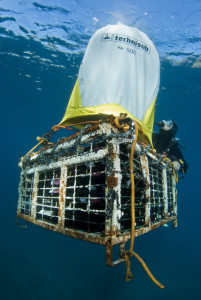 I jumped into the water and watched Jan lower the crate gently onto the seabed 10 metres below. Putting on my diving instructor hat for just one moment, this would be the perfect example for a lifting bag training course. Maybe there could be new PADI distinctive speciality in the midst? How about underwater wine diver? There were a few silvery bream watching the show and a startled scorpion fish darted out of the way just in the nick of time as the crate landed. Jan told me there were quite a lot of ‘teething troubles’ during the early stages of the project. The first batches were dropped to a depth of 20 metres but they found that the water pressure pushed the corks inside the bottles. Moving the crate into shallower water resolved this issue. A number of bottles were ruined by salt water seeping in through the corks so screw caps were fitted instead. But being made of metal they ended up going rusty. After some experimentation silicon corks and plastic sparkling wine corks turned out to be the best option. They also had problems distinguishing between the different wines due to the fact that the labels kept flaking off. Jan suggested a simple colour coded tagging system which seemed to work quite nicely.
I jumped into the water and watched Jan lower the crate gently onto the seabed 10 metres below. Putting on my diving instructor hat for just one moment, this would be the perfect example for a lifting bag training course. Maybe there could be new PADI distinctive speciality in the midst? How about underwater wine diver? There were a few silvery bream watching the show and a startled scorpion fish darted out of the way just in the nick of time as the crate landed. Jan told me there were quite a lot of ‘teething troubles’ during the early stages of the project. The first batches were dropped to a depth of 20 metres but they found that the water pressure pushed the corks inside the bottles. Moving the crate into shallower water resolved this issue. A number of bottles were ruined by salt water seeping in through the corks so screw caps were fitted instead. But being made of metal they ended up going rusty. After some experimentation silicon corks and plastic sparkling wine corks turned out to be the best option. They also had problems distinguishing between the different wines due to the fact that the labels kept flaking off. Jan suggested a simple colour coded tagging system which seemed to work quite nicely.
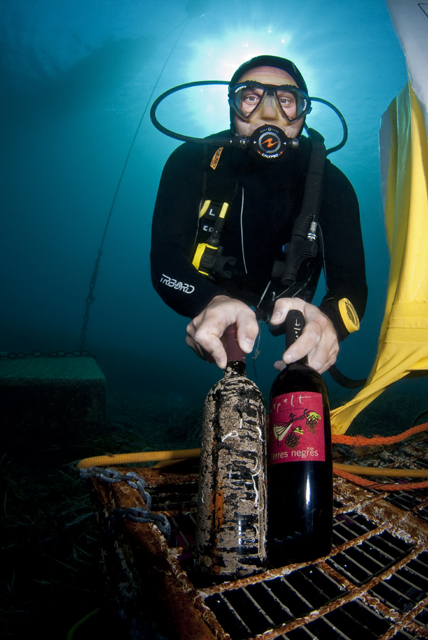 The bottles are left on the seabed for a period of around 6 months. Xavier told me that this was all guess work and it just happened that 6 months was okay. I visited Cala Joncols at the end of October so this particular crateful would spend the entire winter period right through to spring 2013 submerged underwater. There are several environmental factors affecting the wine bottles. Under standard factory controlled conditions red wine is stored at a constant temperature of around 14 degrees and white wine between 6 to 10 degrees. But the sea temperature in Cala Joncols bay drops to around 11 or 12 degrees in the winter and then steadily rises to a high of 19 or 20 degrees in the summer months. Weather conditions i.e. waves and surge will also disturb the bottles where normally there wouldn’t be any movement at all.
The bottles are left on the seabed for a period of around 6 months. Xavier told me that this was all guess work and it just happened that 6 months was okay. I visited Cala Joncols at the end of October so this particular crateful would spend the entire winter period right through to spring 2013 submerged underwater. There are several environmental factors affecting the wine bottles. Under standard factory controlled conditions red wine is stored at a constant temperature of around 14 degrees and white wine between 6 to 10 degrees. But the sea temperature in Cala Joncols bay drops to around 11 or 12 degrees in the winter and then steadily rises to a high of 19 or 20 degrees in the summer months. Weather conditions i.e. waves and surge will also disturb the bottles where normally there wouldn’t be any movement at all.
Judging by my calculations 300 bottles of wine at approximately 18 – 25 euro per bottle is around the 7,000 euro mark. So this works out to be a substantial investment. Jan said that last year they nabbed some sneaky divers trying to steal the whole crate off the seabed. As a deterrent Jan has fitted a lock and chain, which is connected to a large concrete base. They also removed the marker buoy from the surface so the wine was harder to find.
In February 2010 Cala Joncols hotel hosted a big wine tasting event. Experts from all over Spain were invited as well as members of the media. After much gurgling and spitting the underwater wines received a mixed response. Some liked the taste and others were not so enamoured. The reds fared well. The Cava’s – white and rose – were voted the best.
On my last non-diving day before flying back home I decided to visit the Espelt vineyard for my own personal wine tasting afternoon (Euro Divers regularly arrange visits for divers). They offer a full tour of the factory followed by the all important sampling session. I tried a number of reds, whites and sparkling varieties from the underwater batches and the standard processes (and still managed to walk out afterwards!) I found that the underwater wines definitely had a distinct taste. Xavier seemed to think that the wine aged faster underwater. Apart from the cork problem the difference in depth/pressure shouldn’t have any effect on the wine as it’s in a sealed glass bottle. So the fluctuating temperature and the water movement must be the 2 residing factors that change the taste.
The whites and reds cost 18 euro a bottle and the Cava is 25 euro. All the wines are around 14 percent proof. Xavier said “we are not looking to sell this wine to a wider market.” So for now the only place you can buy a bottle of especial vino subacuatico is at Cala Joncols hotel. For the past 2 years they have only sunk 300 bottles each year but the wines popularity is growing fast. To be honest I’m not sure whether this is due to the novelty factor or down to the taste of the wine itself. Xavier concluded “we’re just having some fun.”
To find out more about Euro-Divers Spain, visit www.euro-divers.com/diving/diving-spain.
To find out more about Cala Joncols Hotel, visit www.calajoncols.com.
Discuss this article in the Scubaverse Forum.
Blogs
Northern Red Sea Reefs and Wrecks Trip Report, Part 3: The Mighty Thistlegorm
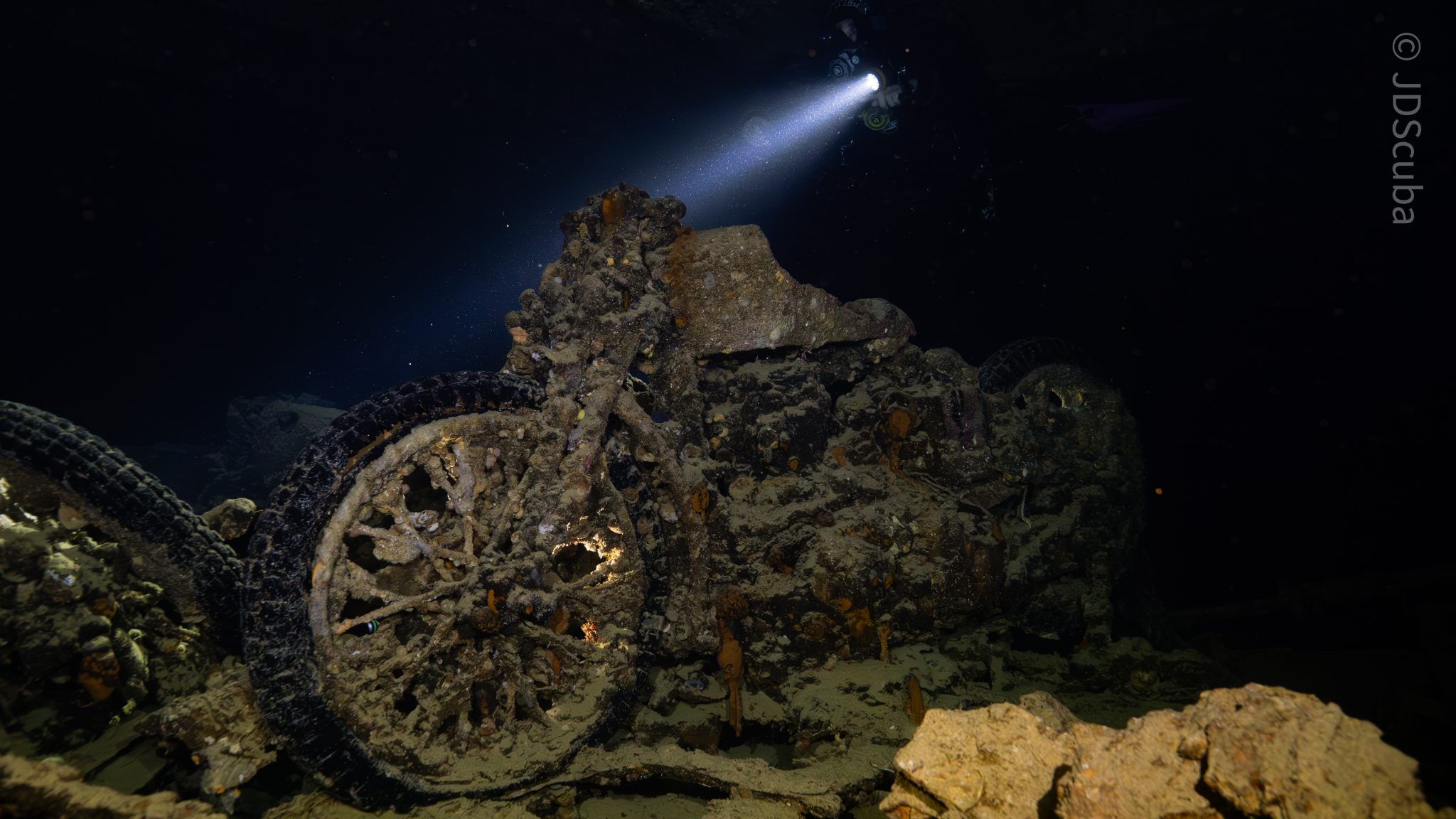
Jake Davies boards Ghazala Explorer for an unforgettable Red Sea diving experience…
Overnight, the wind picked up, making the planned morning dive a bit bumpy on the Zodiacs to the drop point on Thomas Reef. There, we would dive along the reef before descending through the canyon and then passing under the arch before ascending the wall with a gentle drift. The site provided great encounters with more pelagic species, including shoals of large barracuda, tuna, and bigeye trevally.
Once back on the boat, it was time to get everything tied down again as we would head back south. This time, with the wind behind us, heading to Ras Mohammed to dive Jackfish Alley for another great gentle drift wall dive before then heading up the coast towards the Gulf of Suez to moor up at the wreck of the Thistlegorm. This being the highlight wreck dive of the trip and for many onboard, including myself, it was the first time diving this iconic wreck. I had heard so much about the wreck from friends, and globally, this is a must on any diver’s list. Fortunately for us, there was only one other boat at the site, which was a rarity. A great briefing was delivered by Ahmed, who provided a detailed background about the wreck’s history along with all the required safety information as the currents and visibility at the site can be variable.
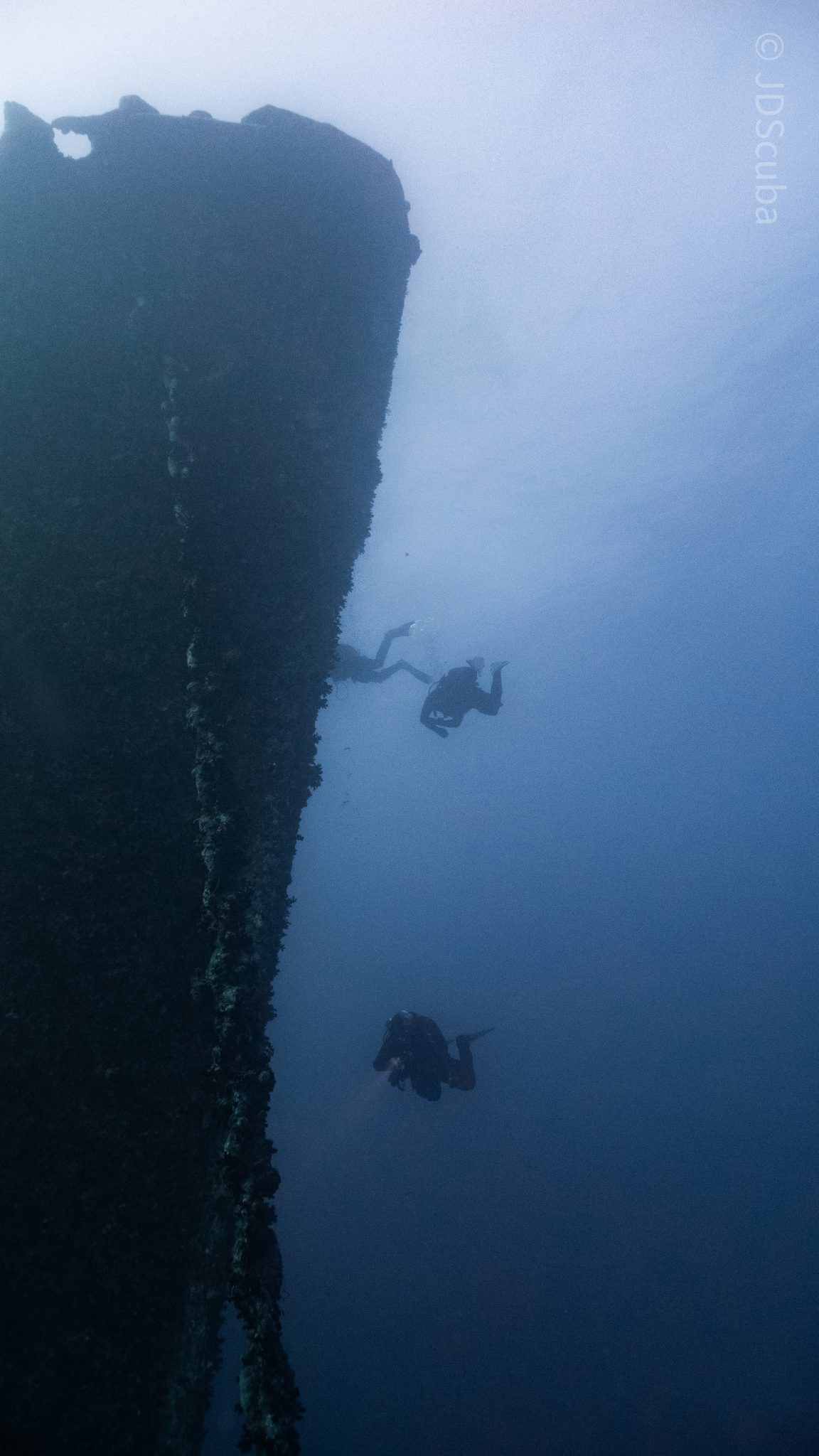
Kitting up, there was a lot of excitement on deck before entering the water and heading down the shoreline. Descending to the wreck, there was a light northerly current which reduced the visibility, making it feel more like the conditions that can be found off the Welsh coast. At 10m from the bottom, the outline of the wreck appeared as we reached the area of the wreck which had been bombed, as our mooring line was attached to part of the propeller shaft. Arriving on deck, instantly everywhere you looked there were many of the supplies which the ship was carrying, including Bren Carrier tanks and projectiles that instantly stood out.
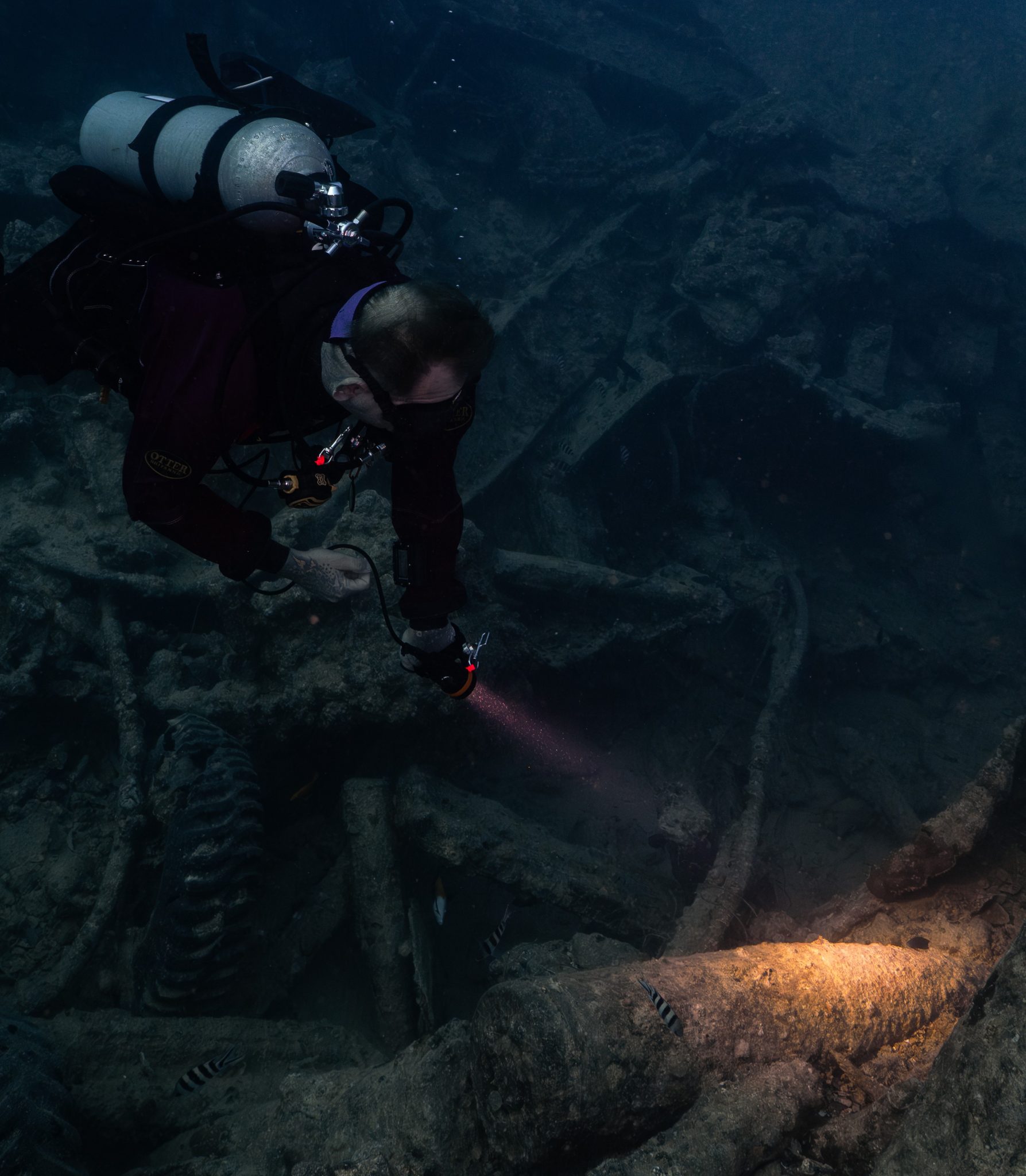
We headed around the exterior, taking a look at the large propeller and guns mounted on deck before entering the wreck on the port side to take a look in the holds. It was incredible to see all the trucks, Norton 16H, and BSA motorcycles still perfectly stacked within, providing a real snapshot in time.
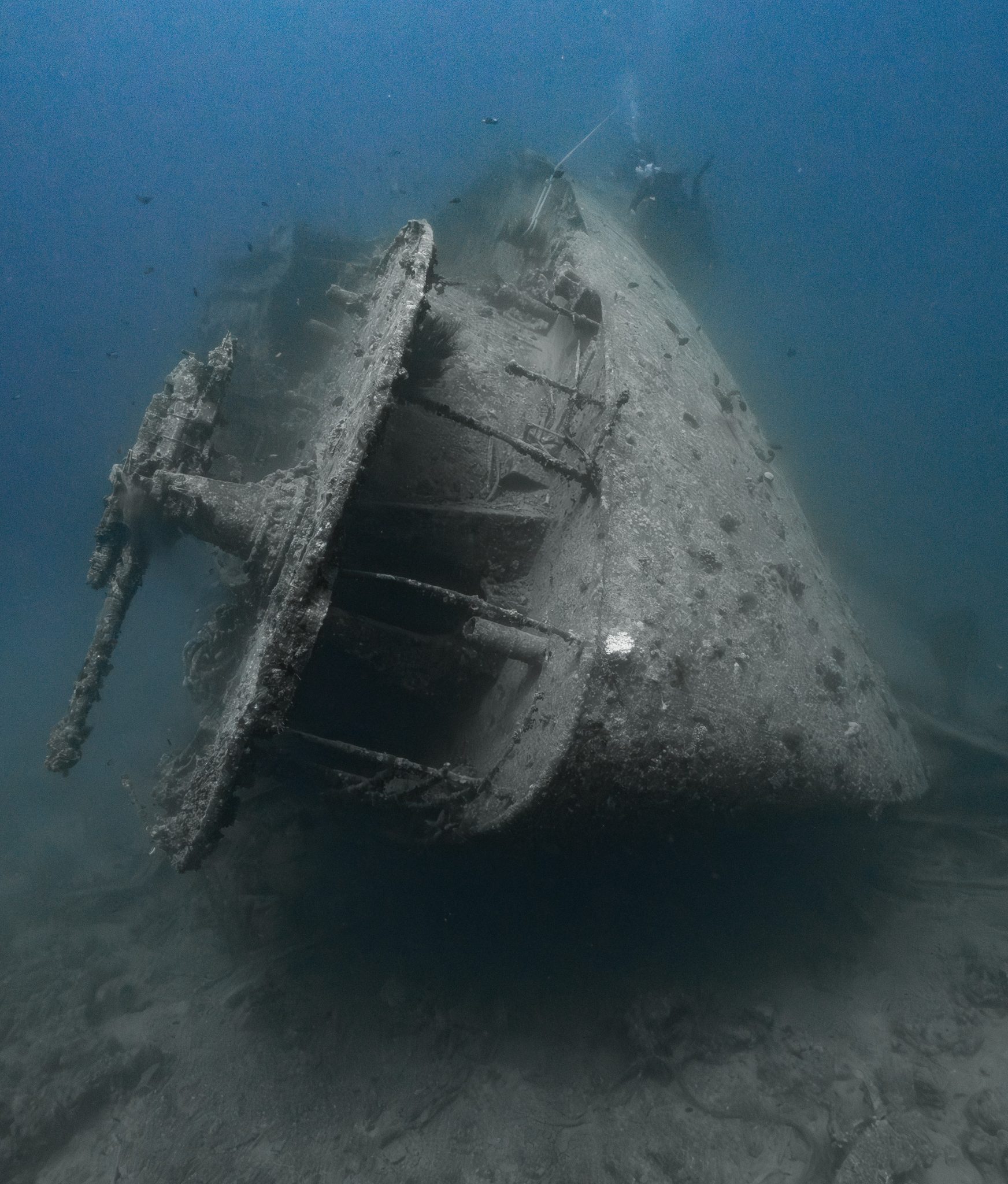
Overall, we had four dives on the Thistlegorm, where for all of the dives we were the only group in the water, and at times, there were just three of us on the whole wreck, which made it even more special, especially knowing that most days the wreck has hundreds of divers. Along with the history of the wreck, there was plenty of marine life on the wreck and around, from big green turtles to batfish, along with shoals of mackerel being hunted by trevally. Some unforgettable dives.
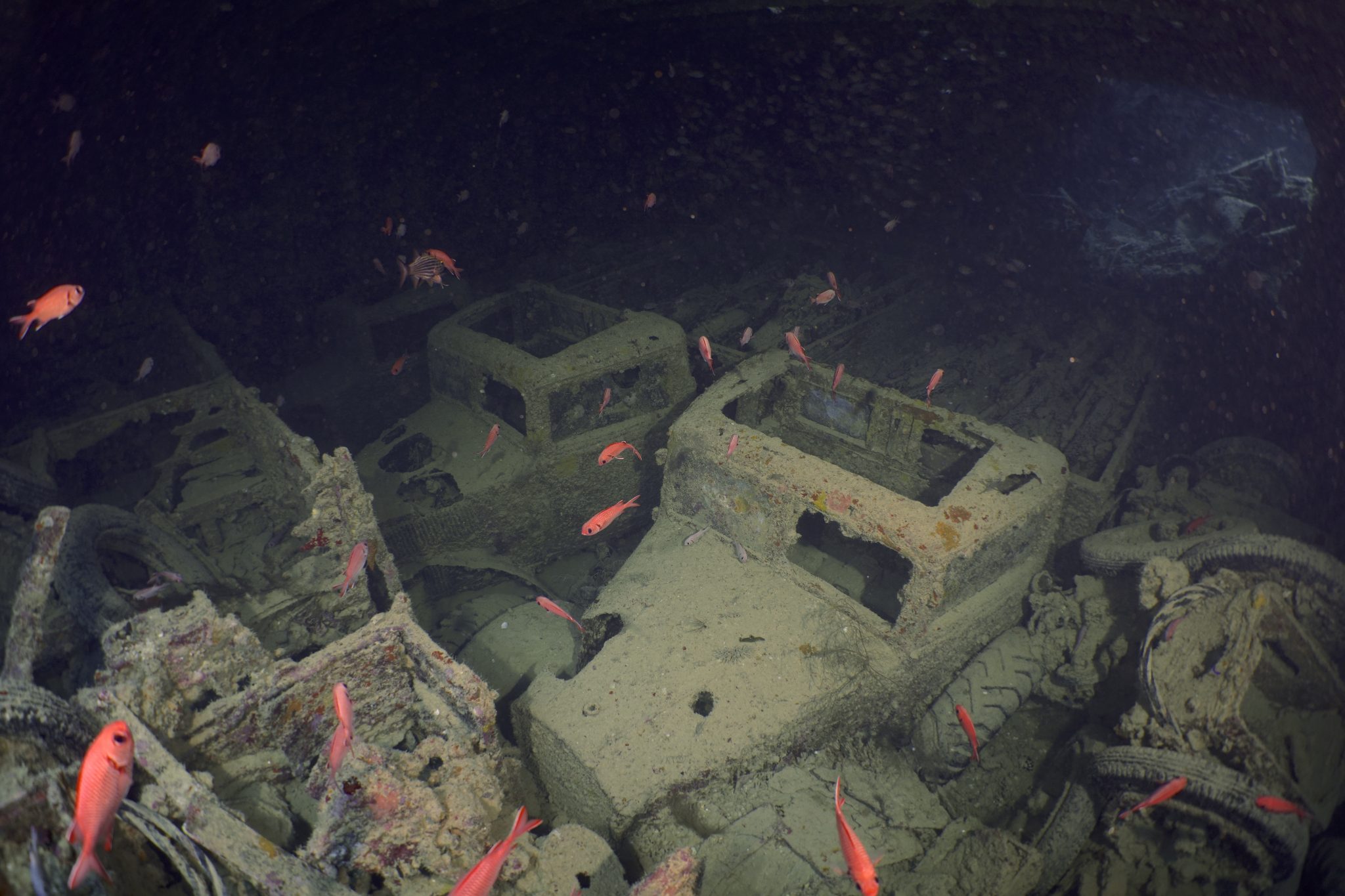
The final leg of the trip saw us cross back over the Suez Canal to the Gobal Islands where we planned to stay the night and do three dives at the Dolphin House for the potential of sharing the dive with dolphins. The site, which included a channel that was teeming with reef fish, especially large numbers of goatfish that swam in large shoals along the edge of the reef. These were nice relaxing dives to end the week. Unfortunately, the dolphins didn’t show up, which was okay as like all marine life they are difficult to predict and you can’t guarantee what’s going to be seen. With the last dive complete, we headed back to port for the final night where it was time to clean all the kit and pack before the departure flight the next day.
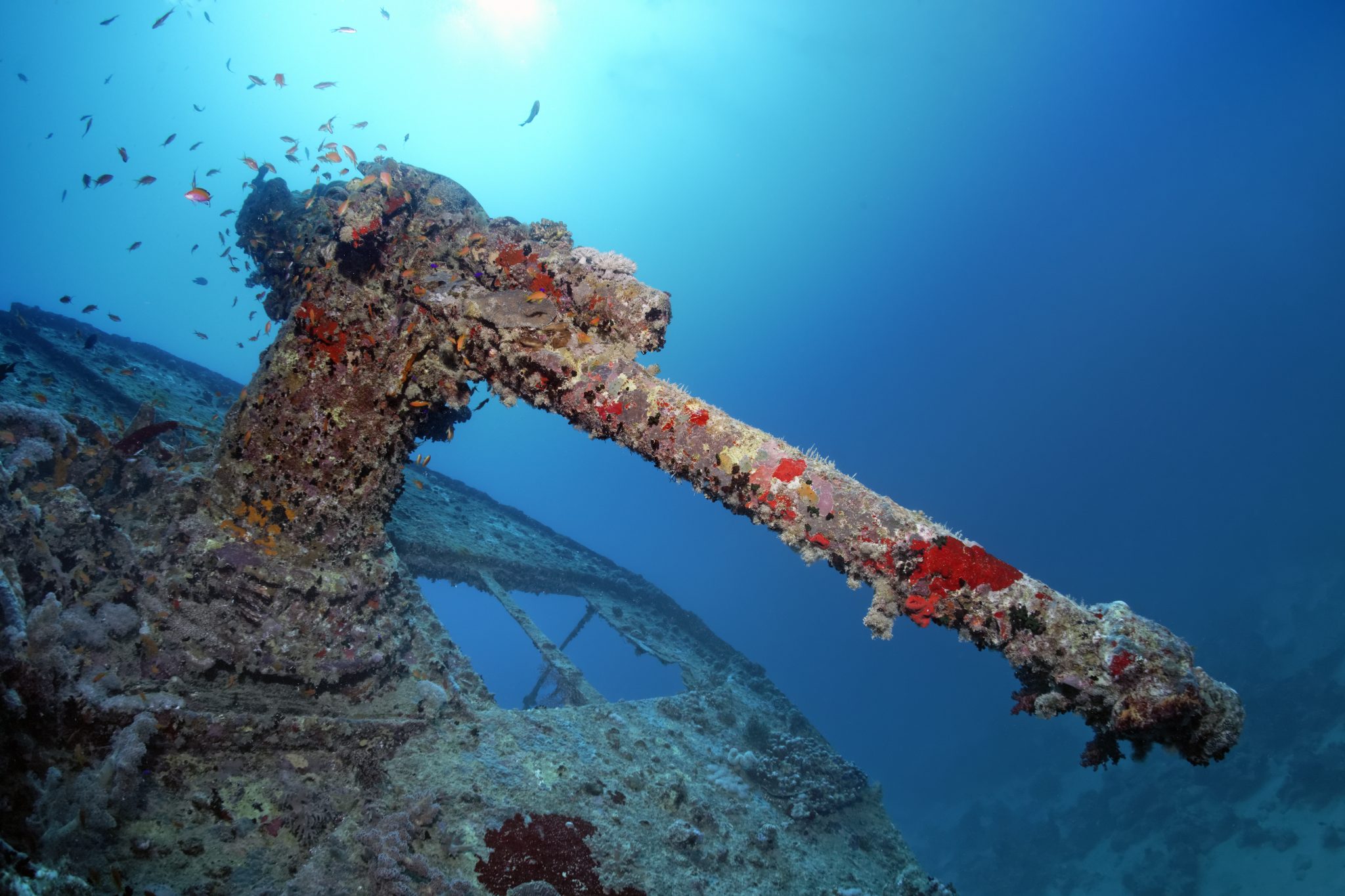
The whole week from start to finish on Ghazala Explorer was amazing; the boat had all the facilities you need for a comfortable week aboard. The crew were always there to help throughout the day and the chefs providing top quality food which was required after every dive. The itinerary providing some of the best diving with a nice mixture of wreck and reef dives. I would recommend the trip to anyone, whether it’s your first Red Sea liveaboard in the Red Sea or you’re revisiting. Hopefully, it’s not too long before I head back to explore more of the Red Sea onboard Ghazala Explorer.
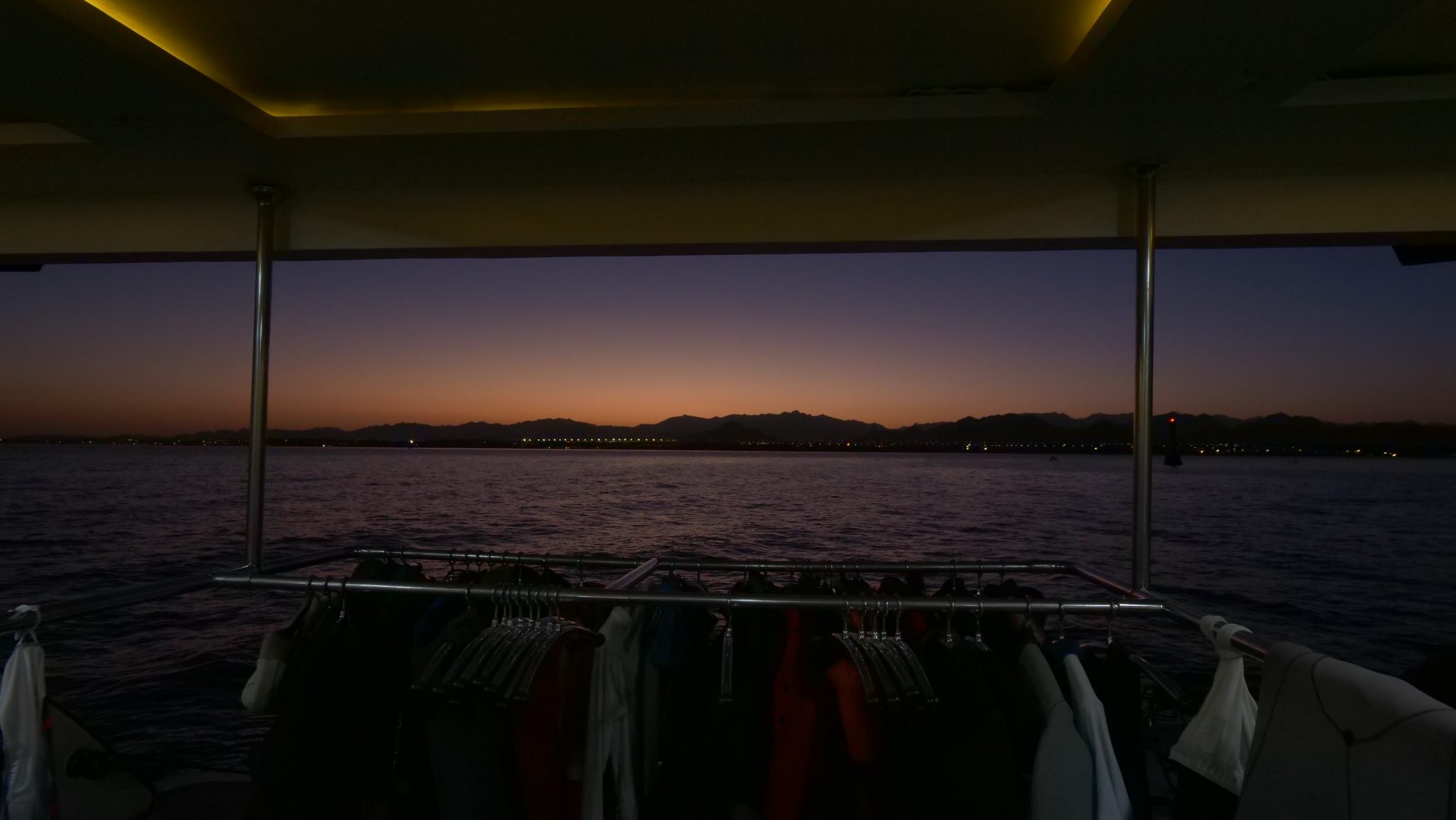
To find out more about the Northern Red Sea reef and wrecks itineraries aboard Ghazala Explorer, or to book, contact Scuba Travel now:
Email: dive@scubatravel.com
Tel: +44 (0)1483 411590
Photos: Jake Davies / Avalon.Red
Blogs
Northern Red Sea Reefs and Wrecks Trip Report, Part 2: Wall to Wall Wrecks
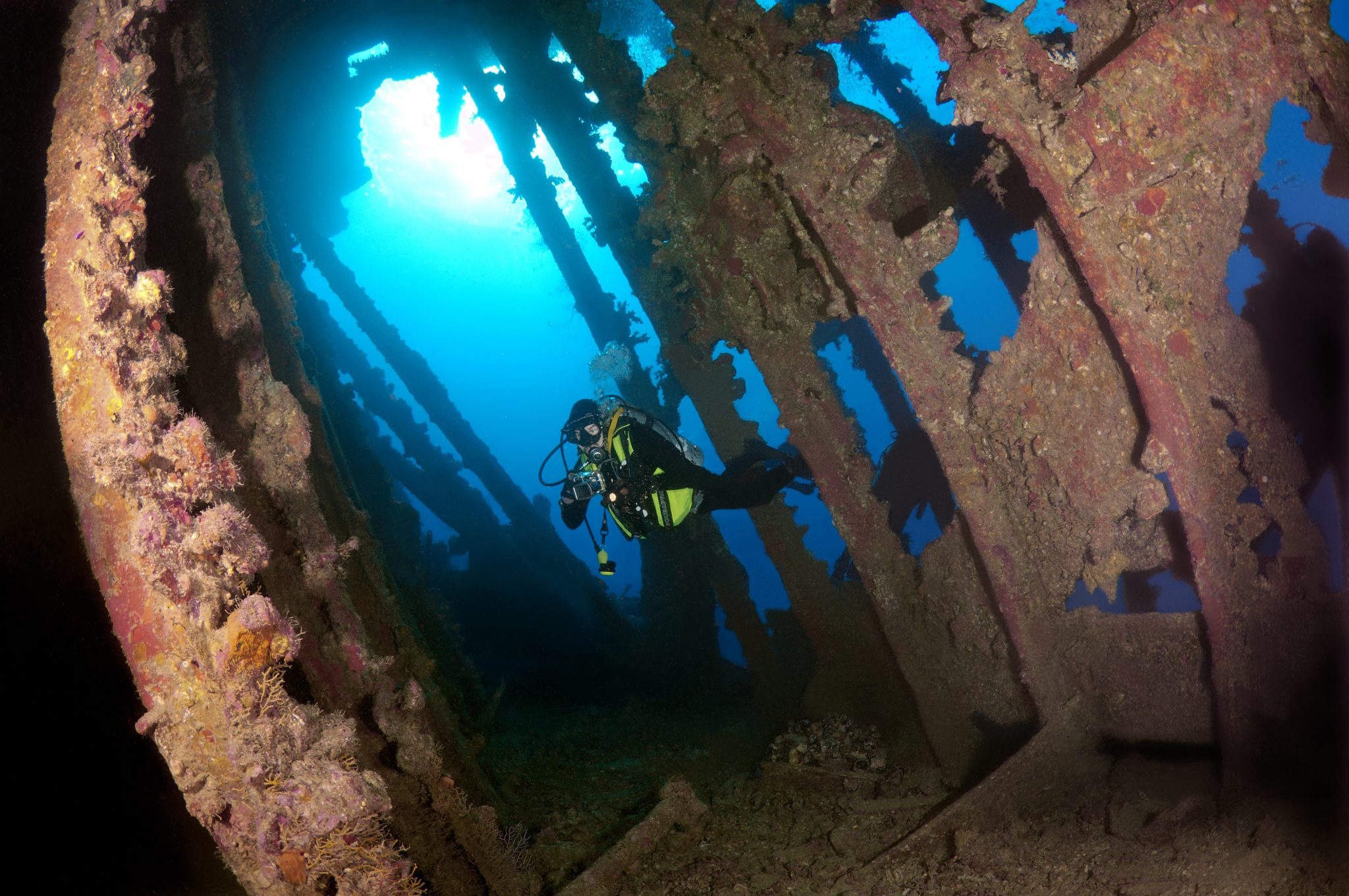
Jake Davies boards Ghazala Explorer for an unforgettable Red Sea diving experience…
The second day’s diving was a day full of wreck diving at Abu Nuhas, which included the Chrisoula K, Carnatic, and Ghiannis D. The first dive of the day was onto the Chrisoula K, also known as the wreck of tiles. The 98m vessel remains largely intact where she was loaded with tiles which can be seen throughout the hold. The stern sits at 26m and the bow just below the surface. One of the highlights of the wreck is heading inside and seeing the workroom where the machinery used for cutting the tiles are perfectly intact. The bow provided some relaxing scenery as the bright sunlight highlighted the colours of the soft coral reef and the many reef fish.
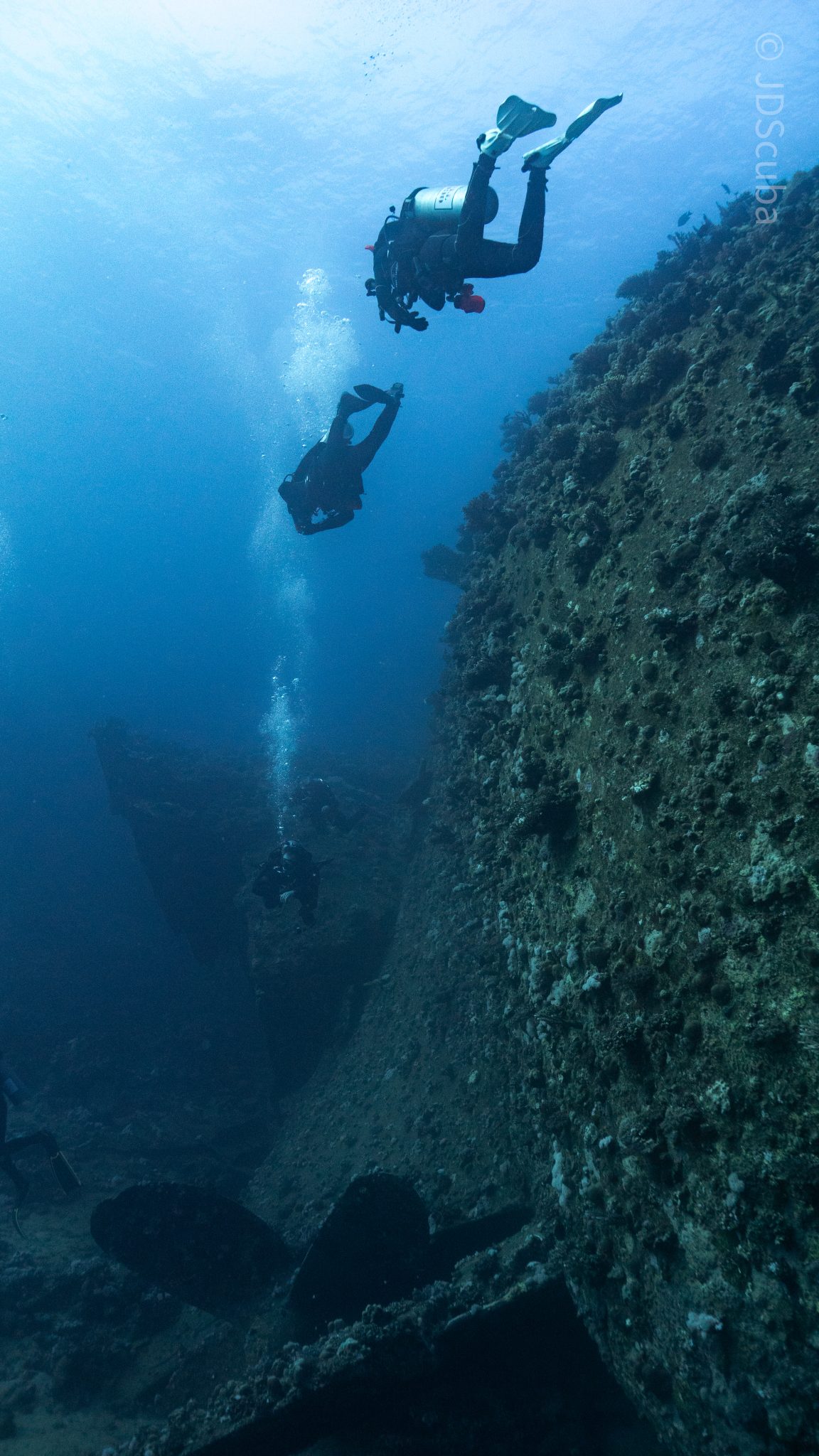
Following breakfast, we then headed to the next wreck, which was the Carnatic. The Carnatic is an 89.9m sail steamer vessel that was built in Britain back in 1862. She ran aground on the reef back in 1869 and remains at 27m. At the time, she was carrying a range of items, including 40,000 sterling in gold. An impressive wreck where much of the superstructure remains, and the two large masts lay on the seafloor. The wooden ribs of the hull provide structures for lots of soft corals, and into the stern section, the light beams through, bouncing off the large shoals of glass fish that can be found using the structure as shelter from the larger predators that are found outside of the wreck.
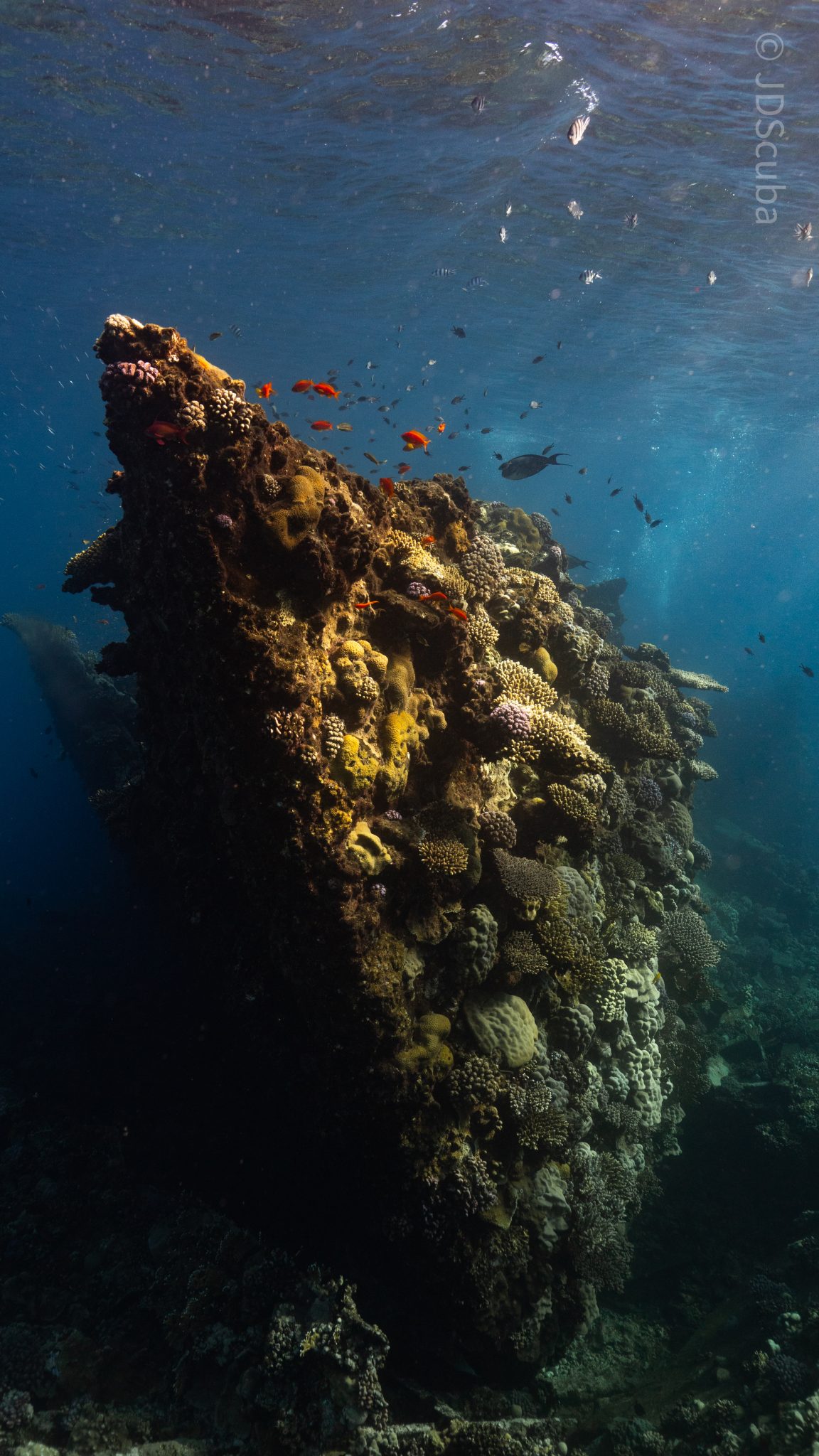
The final wreck at Abu Nuhas was the Ghiannis D, originally called ‘Shoyo Maru,’ which was 99.5m long and built in Japan back in 1969 before becoming a Greek-registered cargo ship in 1980. The ship then ran aground on the reef on April 19th, 1983, and now sits at the bottom at a depth of 27m. Heading down the line, the stern of the ship remains in good condition compared to the rest of the hull. The highlight of the wreck, though, is heading into the stern section and down the flights of stairs to enter the engine room, which remains in good condition and is definitely worth exploring. After exploring the interior section of the ship, we then headed over to see the rest of the superstructure, where it’s particularly interesting to see the large table corals that have grown at the bow relatively quickly considering the date the ship sank. After surfacing and enjoying some afternoon snacks, we made sure everything was strapped down and secured as we would be heading north and crossing the Gulf of Suez, where the winds were still creating plenty of chop.
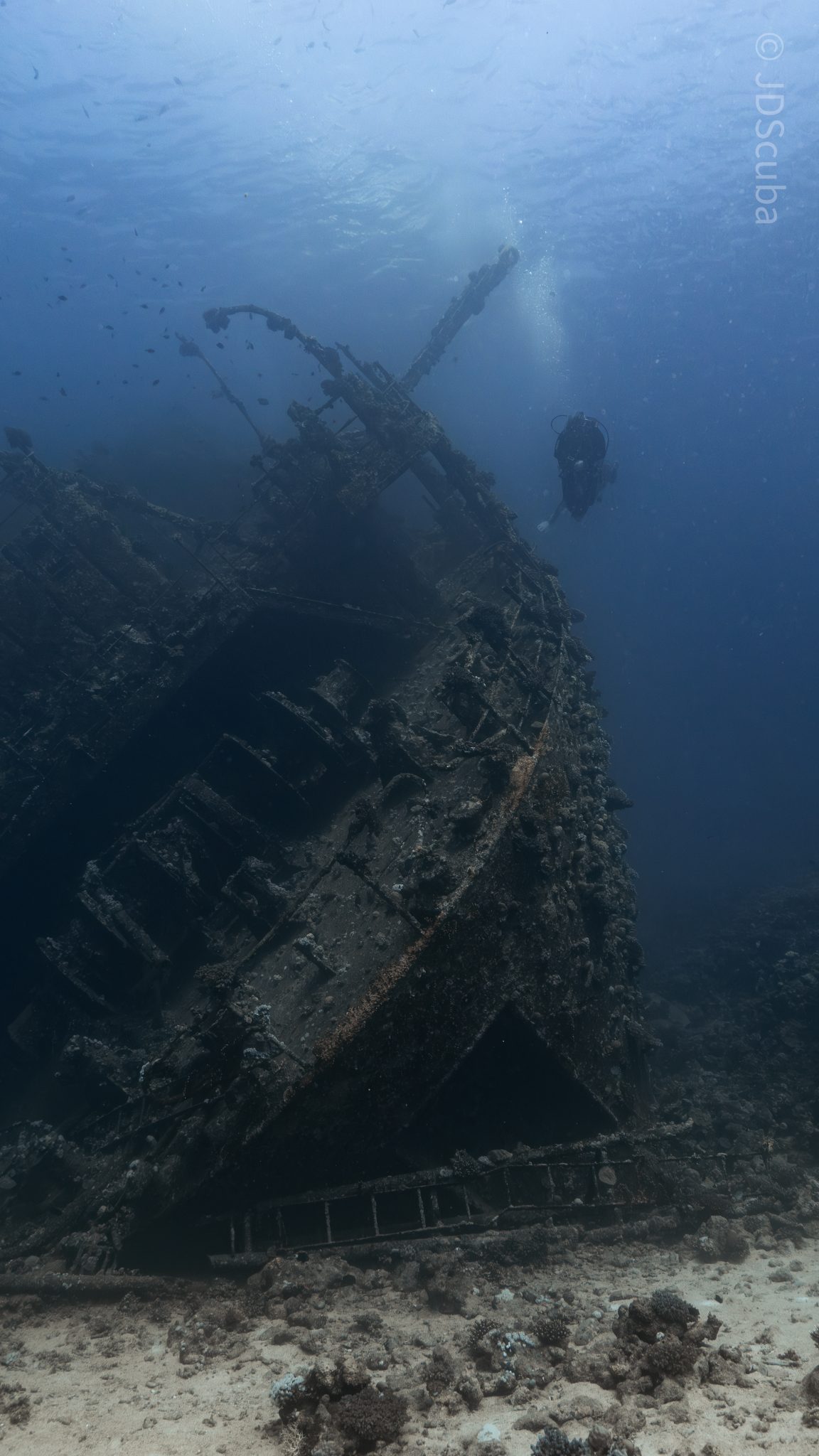
The next morning, it was a short hop to Ras Mohammed Nature Reserve for the next couple of days of diving. The 6am wake-up call came along with the briefing for the first site we would be diving, which was Shark & Yolanda. The low current conditions allowed us to start the dive at Anemone City, where we would drift along the steep, coral-filled wall. These dives involved drifts, as mooring in Ras Mohammed wasn’t allowed to protect the reefs. As a dive site, Shark & Yolanda is well-known and historically had a lot of sharks, but unfortunately not so many in recent years, especially not so early in the season. However, there was always a chance when looking out into the blue.
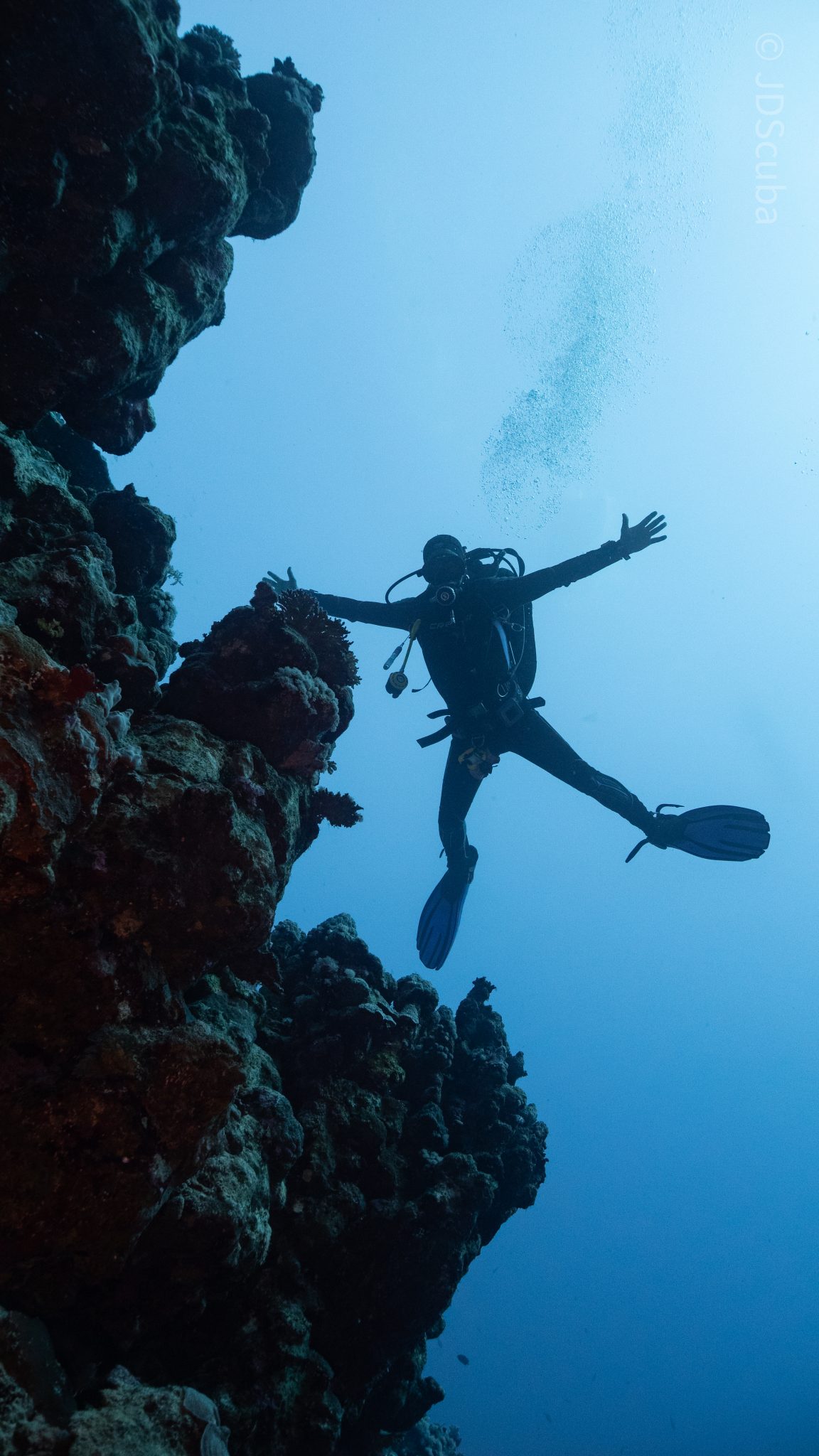
The gentle drift took us along the steep walls of the site, with plenty of anemone fish to be seen and a huge variety of corals. It wasn’t long into the dive before we were accompanied by a hawksbill turtle, who drifted with us between the two atolls before parting ways. Between the two reefs, the shallow patch with parts of coral heads surrounded by sand provided the chance to see a few blue-spotted stingrays that were mainly resting underneath the corals and are always a pleasure to see. With this being the morning dive, the early sunlight lit up the walls, providing tranquil moments. Looking out into the blue, there was very little to be seen, but a small shoal of batfish shimmering underneath the sunlight was a moment to capture as we watched them swim by as they watched us.
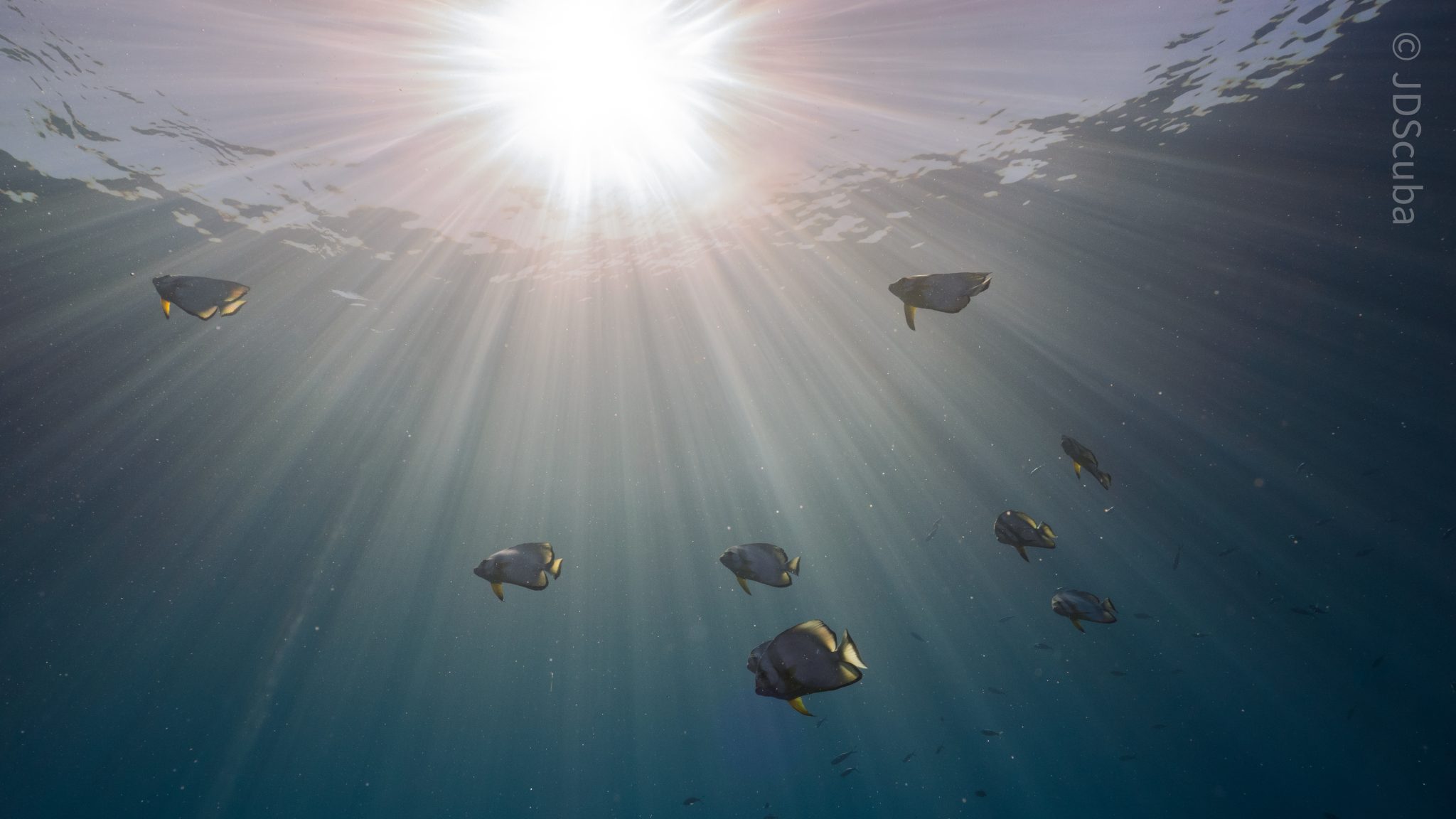
Towards the end of the dive, we stopped at the wreck of the Jolanda where the seafloor was scattered with toilets from the containers it was carrying. This provided a unique site to make a safety stop, which was also accompanied by a large barracuda slowly swimming by, along with a hawksbill turtle calmly swimming over the reef as the sun rays danced in the distance.
For the next dive, we headed north to the Strait of Tiran to explore the reefs situated between Tiran Island and Sharm El Sheik, which were named after the British divers who had found them. We started on Jackson before heading to Gordons Reef, where we also did the night dive. All the atolls at these sites provided stunning, bustling coral reefs close to the surface and steep walls to swim along, which always provided the opportunity to keep an eye out for some of the larger species that can be seen in the blue. Midwater around Jackson Reef was filled with red-toothed triggerfish and shoals of banner fish, which at times were so dense that you couldn’t see into the blue. Moments went by peacefully as we enjoyed the slow drift above the reef, watching these shoals swim around under the mid-afternoon sun.
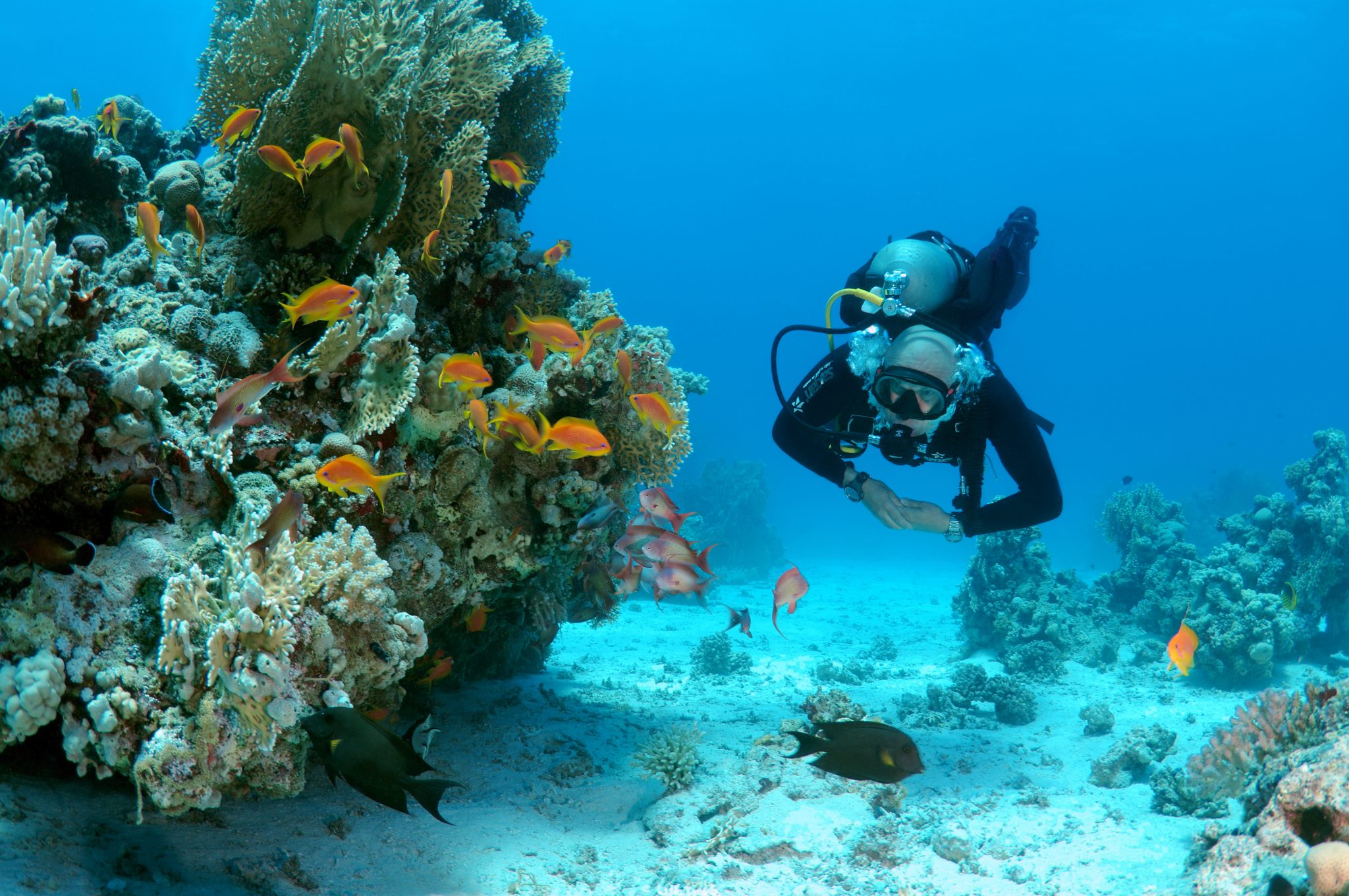
The night dive at Gordon’s Reef was mainly among the stacks of corals surrounded by sand, which was great to explore under the darkness. After some time circling the corals, we came across what we were really hoping to find, and that was an octopus hunting on the reef. We spent the majority of the dive just watching it crawl among the reef, blending into its changing surroundings through changes in colour and skin texture. It’s always so fascinating and captivating to watch these incredibly intelligent animals, in awe of their ability to carry out these physical changes to perfectly blend into the reef. Before we knew it, it was time to head back to the boat to enjoy a well-deserved tasty dinner prepared by the talented chefs onboard.
Check in for the 3rd and final part of this series from Jake tomorrow!
To find out more about the Northern Red Sea reef and wrecks itineraries aboard Ghazala Explorer, or to book, contact Scuba Travel now:
Email: dive@scubatravel.com
Tel: +44 (0)1483 411590
Photos: Jake Davies / Avalon.Red
-
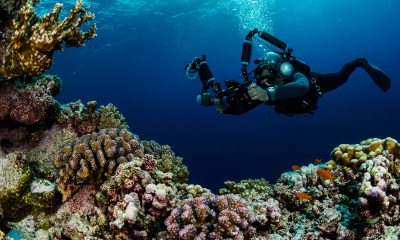
 News3 months ago
News3 months agoHone your underwater photography skills with Alphamarine Photography at Red Sea Diving Safari in March
-
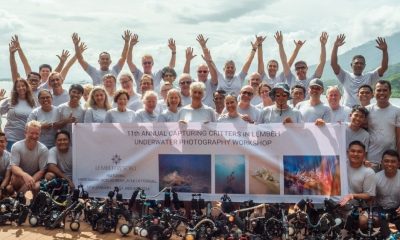
 News3 months ago
News3 months agoCapturing Critters in Lembeh Underwater Photography Workshop 2024: Event Roundup
-
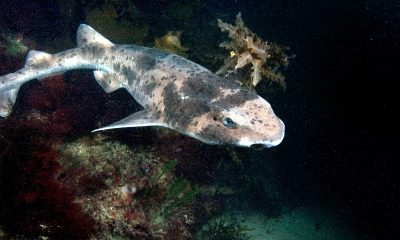
 Marine Life & Conservation Blogs2 months ago
Marine Life & Conservation Blogs2 months agoCreature Feature: Swell Sharks
-
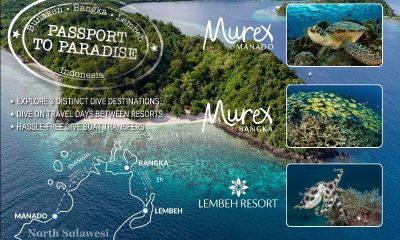
 Blogs2 months ago
Blogs2 months agoMurex Resorts: Passport to Paradise!
-
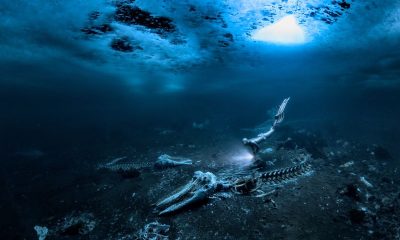
 Blogs2 months ago
Blogs2 months agoDiver Discovering Whale Skeletons Beneath Ice Judged World’s Best Underwater Photograph
-
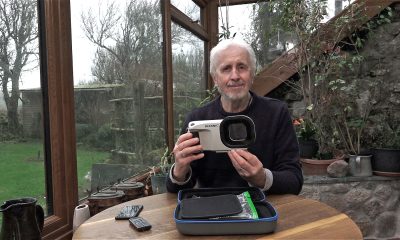
 Gear Reviews3 months ago
Gear Reviews3 months agoGear Review: Oceanic+ Dive Housing for iPhone
-
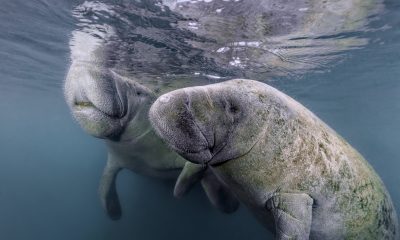
 Marine Life & Conservation2 months ago
Marine Life & Conservation2 months agoSave the Manatee Club launches brand new webcams at Silver Springs State Park, Florida
-
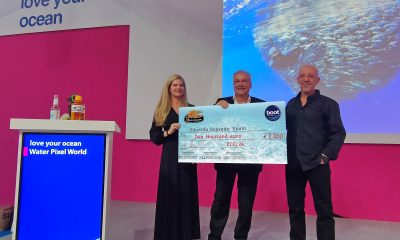
 News3 months ago
News3 months agoWorld’s Best Underwater Photographers Unveil Breathtaking Images at World Shootout 2023


